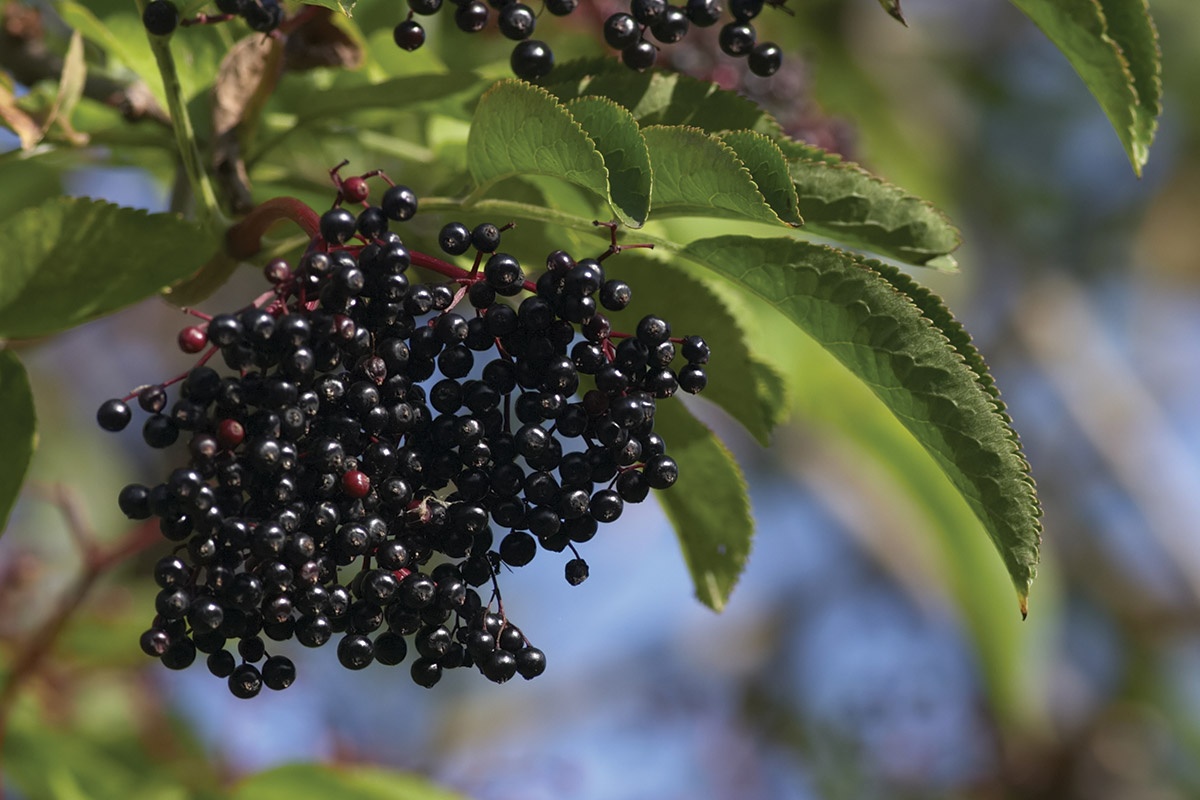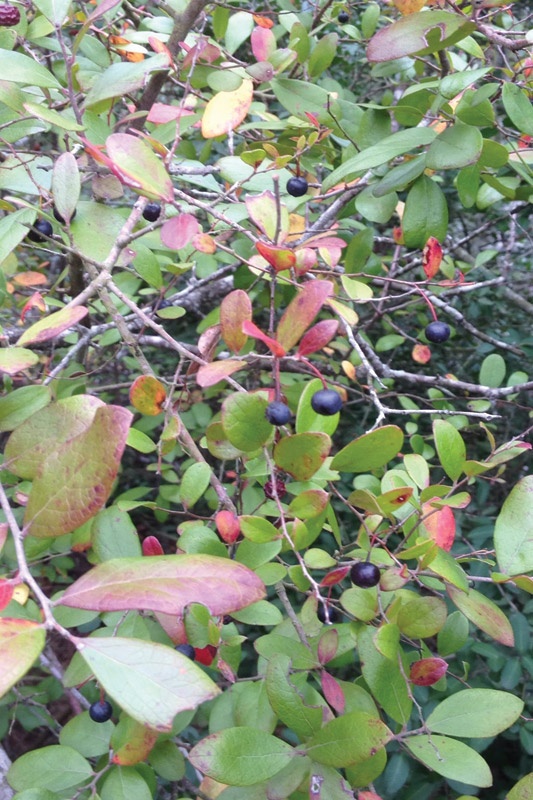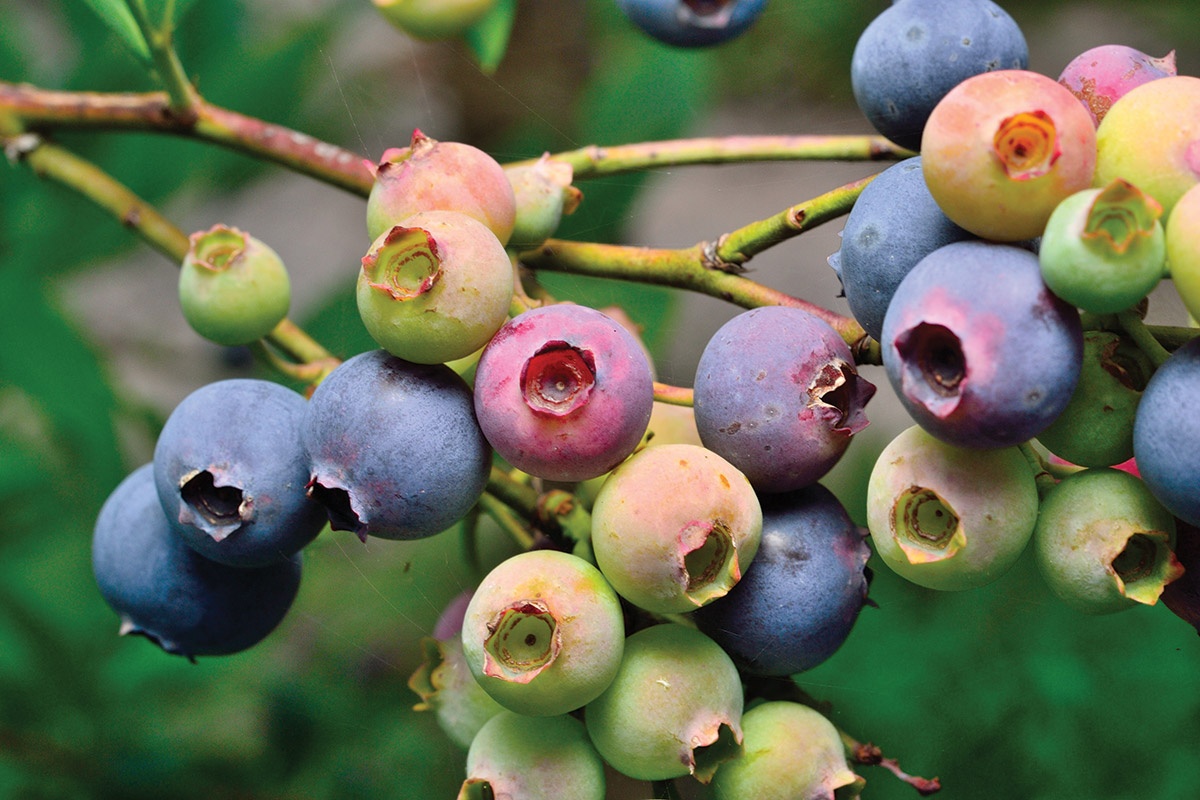Plant enthusiast Mark Vorderbruggen loves nature. He loves it so much, in fact, that he eats it!
Not all of it, of course, but Vorderbruggen, who holds a doctorate in physical organic chemistry, has a knack for finding any plant that is edible—and, well, giving it a try. Naturally, he makes certain he knows what it is before he takes a nibble.
“Both of my parents were children of the Great Depression,” Vorderbruggen said. “In the small farming community where they lived [in Minnesota], the way they got through that terrible time was through common knowledge about edible plants. Though they’re both in their 80s, they are still to this day very deep nature lovers. My earliest memories are being out in the woods with them pointing out all the different plants they used to eat and use for medicinal purposes. Because of this, I just fell in love with the whole concept. Even though my goal was to be a scientist, this knowledge of plants was always there.”
Through his website, foragingtexas.com, and online books and classes, Vorderbruggen educates people about edible native plants in Texas.
Although some types of edible plants may be unfamiliar to most folks, one is known to Texans, especially those in the eastern half of the state: berry-producing plants.
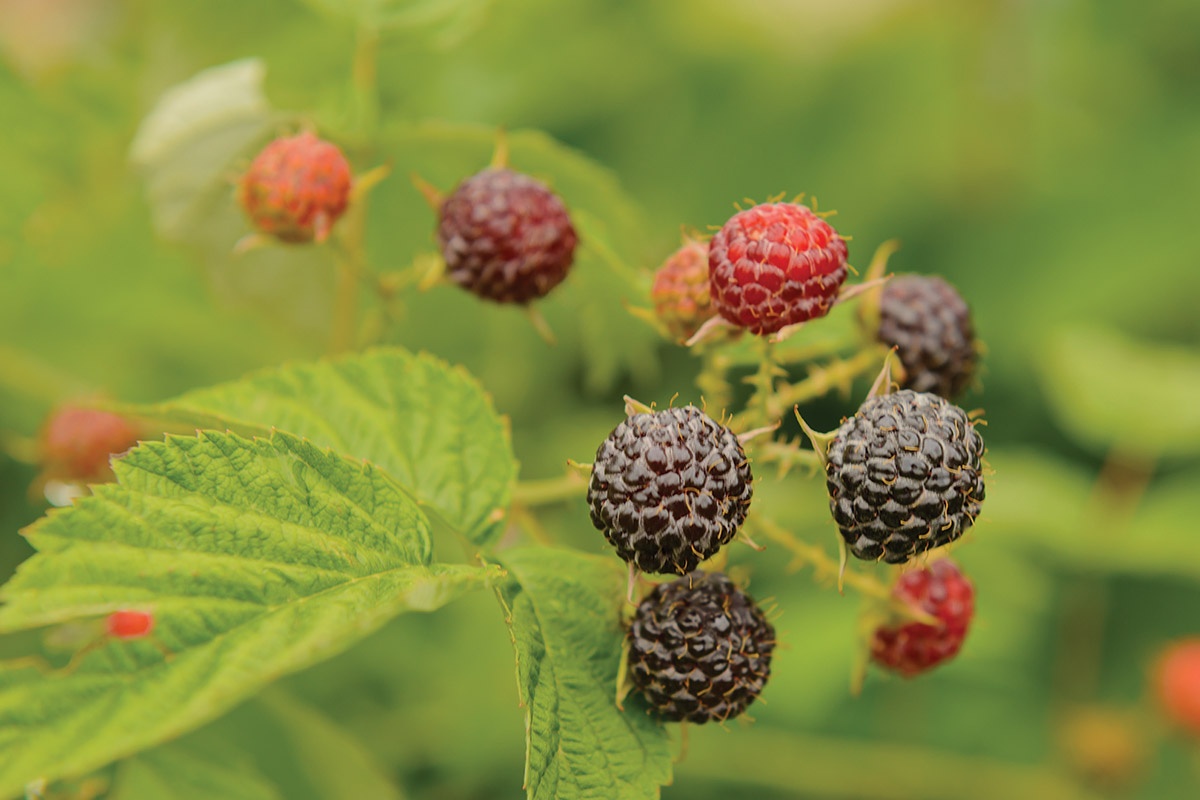
Blackberries, pictured, and dewberries are often confused. The main difference is that the dewberry is a low-growing, sprawling plant that seldom reaches more than 2 feet in height. Blackberry plants have wider stems and grow upright, often 4–5 feet tall.
Alexnikit1981 | iStock.com
Blackberry (Rubus)
Found growing as tall, vertical canes with sharp thorns, this plant prefers sunny areas such as the borders between fields and woods. Harvested in the spring, blackberries can be used to make tea, wine and jelly, offering a flavor that is uniquely tart and sweet.
Dewberry (Rubus)
Dewberries appear as a low, horizontal ground cover with thin vines. Like the blackberry, they also have thorns.
“Genetically, the blackberry and the dewberry are the same plant,” Vorderbruggen said. “But they are like two different breeds of dog. Sometimes, one will be sweeter or more tart than the other, but that is more of a factor of the growing conditions, like sunlight and water. Flavorwise, they are pretty much the same.”
Here’s a tip for hopeful berry cultivators: A particular cane or vine will only produce fruit for one year. After harvesting the berries, remove 25% of the canes or vines. This will not reduce the growth or fruit production of the plant the next year.
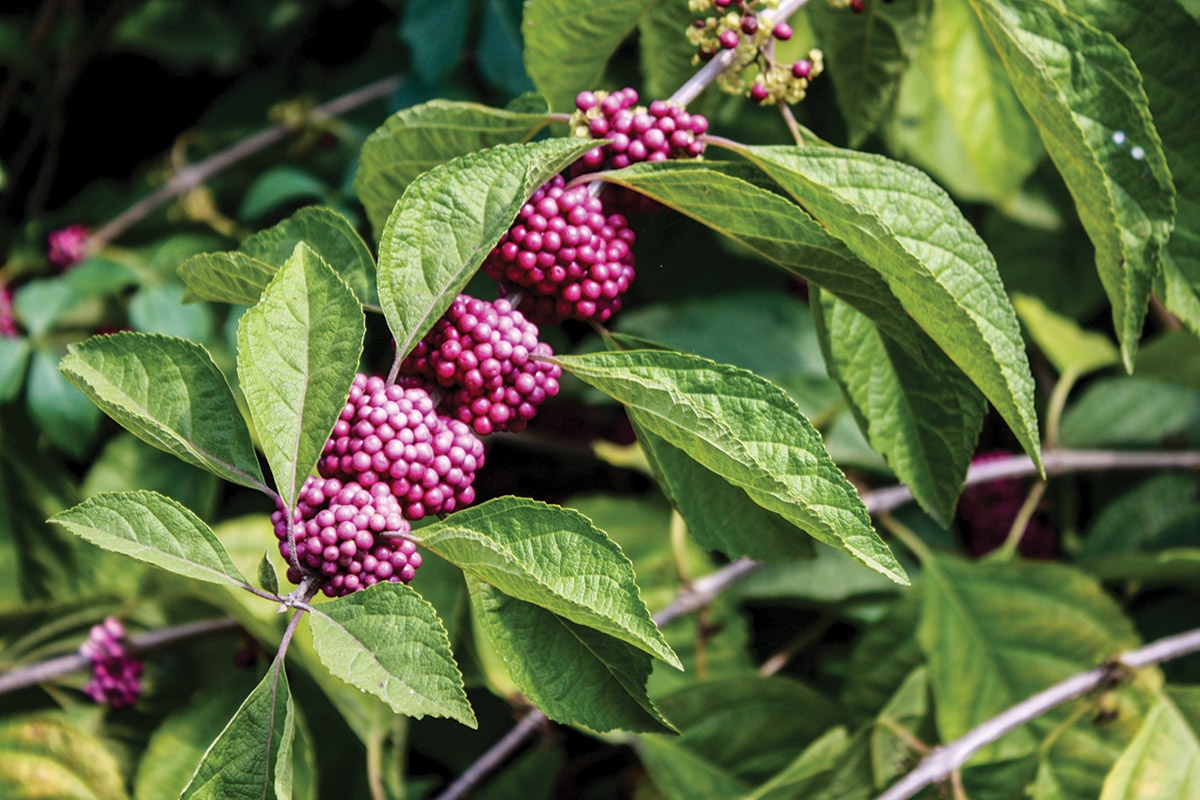
American beautyberry is fairly common in East Texas and produces clusters of magenta-colored berries in the fall. They can be used to make an excellent jelly.
Theresajam1 | iStock.com
Elderberry (Sambucus canadensis)
Some people’s favorite edible part of elderberry plants are the flowers that appear in the spring and all summer long.
“The elderberries themselves are actually slightly toxic,” Vorderbruggen said. “When they’re ripe, there is a volatile chemical in them that must be released. The easiest way to drive the chemical off is to cook them or let them dry or turn them into alcohol. Once this chemical is gone, the flavor of the elderberry improves quite a bit. Elderberries have a very distinctive taste. Their juice is often made into jelly, pies, preserves and wine.”
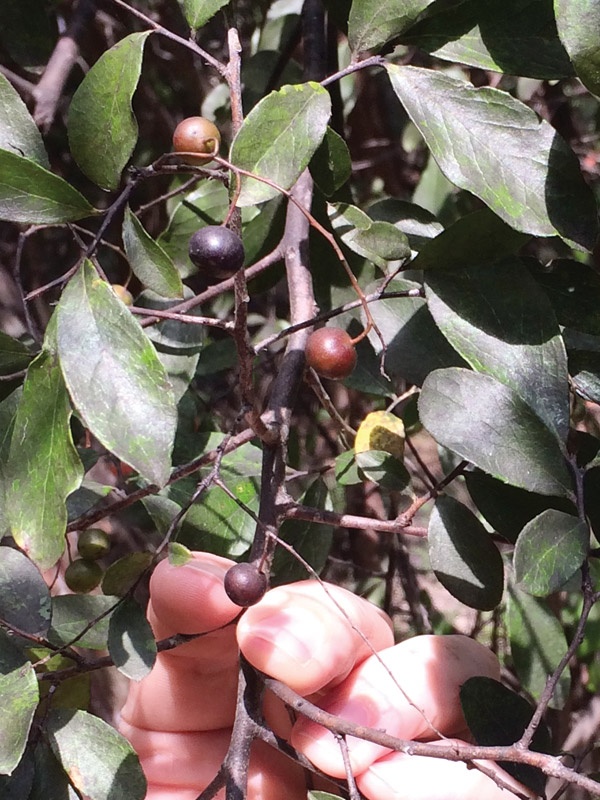
Farkleberry plants are common in East Texas but fairly nondescript. They can grow into small trees and produce small flowers that resemble those of blueberry plants.
Photo courtesy Mark Vorderbruggen
Farkleberry (Vaccinium arboreum)
“Farkleberries taste better if you leave them on the tree long enough to dry out somewhat, which occurs by fall or early winter,” Vorderbruggen said. “This gives the berry a chance to release more sugars so they’ll have more of a raisinlike sweetness to them.”
Eaten raw or made into jam, jelly or wine, farkleberries grow on small trees found in the woods. The bark has a cracked, bricklike form. If you look closely, you’ll see tiny rectangular patches. If you scrape some of the bark away, you’ll see an orange color underneath.
“The berries will be in spaced out clusters, almost looking like individual berries, very small, not much larger than a kernel of popcorn,” Vorderbruggen said. “They have plump, black skin when they’re ripe. The flesh inside has a bunch of tiny seeds, which gives the berry a gritty texture and a tart flavor.”
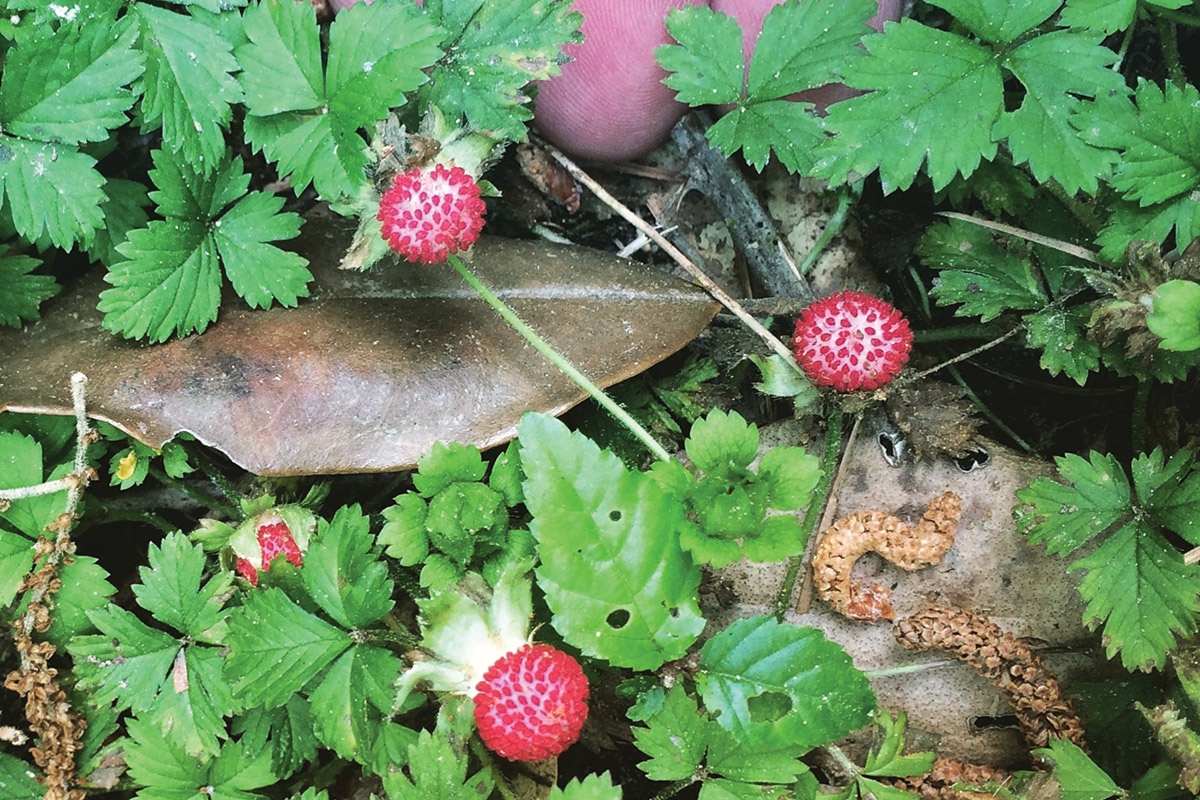
The Indian strawberry is a small berry that thrives in moist, shady areas.
Photo courtesy Mark Vorderbruggen
Indian Strawberry (Duchesnea indica)
The Indian strawberry is a low, creeping, shade-loving plant that likes moist areas.
“Interestingly, during the summer, I receive a lot of emails from people trying to identify it,” Vorderbruggen said. “They often find it growing in their backyard under the trampoline because it’s a shaded, moist area.
“The berries themselves, even though they look like strawberries, are very bland in flavor. I recommend using them as decorations on really sweet deserts,” he said. “They look really pretty, and there’s so much other sweetness going on that people don’t notice the berries don’t have a lot of flavor. In the right habitat, they are present pretty much year-round.”

American beautyberry is fairly common in East Texas and produces clusters of magenta-colored berries in the fall. They can be used to make an excellent jelly.
Theresajam1 | iStock.com
American Beautyberry (Callicarpa americana, Callicarpa japonica)
“The American beautyberry is my favorite wild berry,” Vorderbruggen said. “You find them in the fall. Look for somewhat large, ovate-shaped leaves on a tall bush.”
Where the leaves come off at the stem at the end of the branches, there will be clusters of small berries that are dark magenta in color when ripe. You’ll also see clusters of these berries down the branches. If you eat them raw, they will range in flavor from spiritless to almost medicinal.
“Many people in Texas consider mayhaw jelly to be the best jelly available, but American beautyberry jelly blows mayhaw jelly away,” Vorderbruggen said. “There’s something magical that occurs when you cook down the beautyberry with some sugar, lemon or lime juice and heat. The lemon or lime juice helps you keep the color. The color somewhat depends on the pH quality of the berries. Add a little more lime or lemon juice and the color will come back. You also have to increase the pectin amount by about 10%. Use a blackberry jelly recipe. If you don’t add the pectin, you’ll get an absolutely fantastic syrup that is great when poured over an ice cream sandwich.”
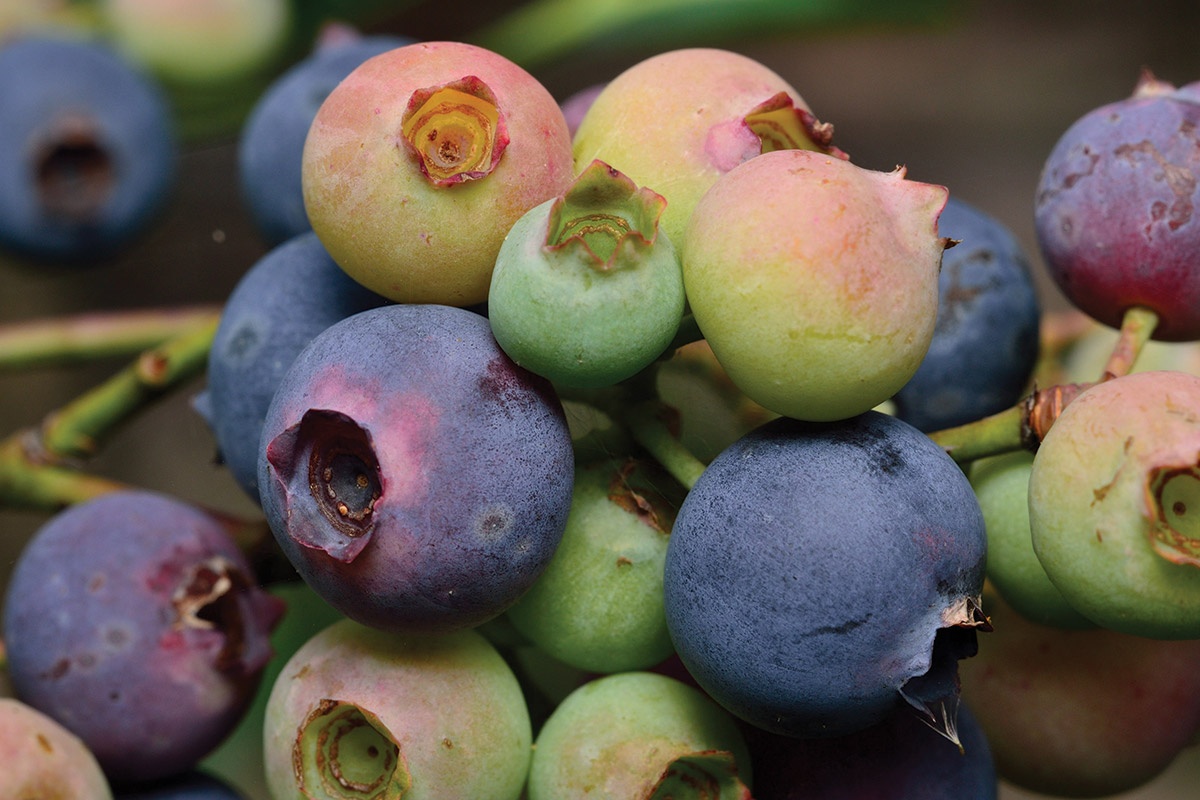
Blueberries are probably the most well-known berry in East Texas. They seldom grow wild in our area but are a staple for folks with large yards or orchards. Small blueberry farms exist regionally where visitors can pick their own berries.
Stephan Myers
Blueberry (Rubus fruiticosus)
The most popular commercial berry in Texas is the blueberry. Offering a taste unlike any other berry, the blueberry is highly nutritious, easy to eat and has small, edible seeds. Ideally eaten fresh, blueberries also can be used to make delicious jams, pies, jellies, juices and pastries.
According to a Texas A&M University publication, blueberries will not grow in soils with a pH above 5.5 (the soil must be acidic, with a pH of 4.0–6.0 for excellent plant growth). The plant does not have root hairs, and its feeder roots remain very close to the surface, so the soil or mulch must be kept moist but well-draining. When ripe (in late spring to early summer), blueberries are dark blue to purple in color.
If reading about these berry-producing plants makes you want to get out into nature (or maybe even your own backyard) to find and eat them, consider getting an expert opinion from Vorderbruggen himself.
It may seem surprising that a man from Minnesota can educate Texans about the edible berries that grow here, but then Texas has always had a long history of folks from other regions making their home in our proud state, rendering Texas a better place in the process.
